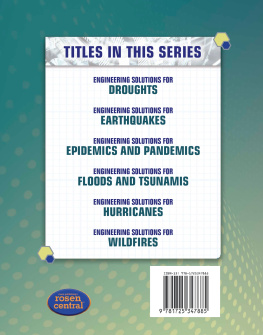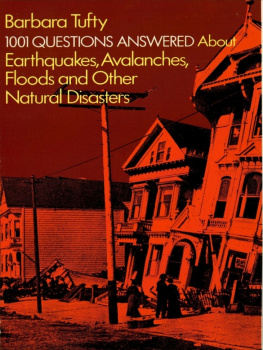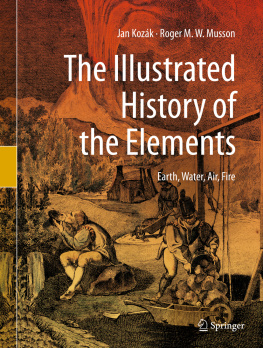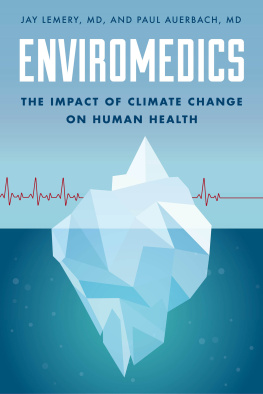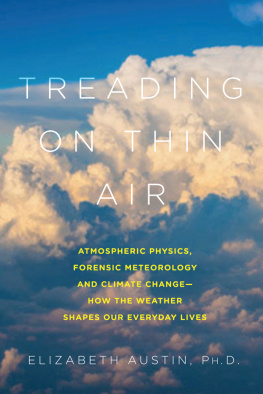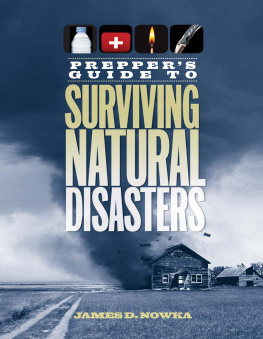Bimal Kanti Paul - Natural Hazards and Disasters: From Avalanches and Climate Change to Water Spouts and Wildfires Vol 1 [2 Volumes]
Here you can read online Bimal Kanti Paul - Natural Hazards and Disasters: From Avalanches and Climate Change to Water Spouts and Wildfires Vol 1 [2 Volumes] full text of the book (entire story) in english for free. Download pdf and epub, get meaning, cover and reviews about this ebook. year: 2020, publisher: ABC-CLIO, genre: Politics. Description of the work, (preface) as well as reviews are available. Best literature library LitArk.com created for fans of good reading and offers a wide selection of genres:
Romance novel
Science fiction
Adventure
Detective
Science
History
Home and family
Prose
Art
Politics
Computer
Non-fiction
Religion
Business
Children
Humor
Choose a favorite category and find really read worthwhile books. Enjoy immersion in the world of imagination, feel the emotions of the characters or learn something new for yourself, make an fascinating discovery.
- Book:Natural Hazards and Disasters: From Avalanches and Climate Change to Water Spouts and Wildfires Vol 1 [2 Volumes]
- Author:
- Publisher:ABC-CLIO
- Genre:
- Year:2020
- Rating:3 / 5
- Favourites:Add to favourites
- Your mark:
- 60
- 1
- 2
- 3
- 4
- 5
Natural Hazards and Disasters: From Avalanches and Climate Change to Water Spouts and Wildfires Vol 1 [2 Volumes]: summary, description and annotation
We offer to read an annotation, description, summary or preface (depends on what the author of the book "Natural Hazards and Disasters: From Avalanches and Climate Change to Water Spouts and Wildfires Vol 1 [2 Volumes]" wrote himself). If you haven't found the necessary information about the book — write in the comments, we will try to find it.
Bimal Kanti Paul: author's other books
Who wrote Natural Hazards and Disasters: From Avalanches and Climate Change to Water Spouts and Wildfires Vol 1 [2 Volumes]? Find out the surname, the name of the author of the book and a list of all author's works by series.
Natural Hazards and Disasters: From Avalanches and Climate Change to Water Spouts and Wildfires Vol 1 [2 Volumes] — read online for free the complete book (whole text) full work
Below is the text of the book, divided by pages. System saving the place of the last page read, allows you to conveniently read the book "Natural Hazards and Disasters: From Avalanches and Climate Change to Water Spouts and Wildfires Vol 1 [2 Volumes]" online for free, without having to search again every time where you left off. Put a bookmark, and you can go to the page where you finished reading at any time.
Font size:
Interval:
Bookmark:

Natural Hazards
and Disasters
Copyright 2021 by ABC-CLIO, LLC
All rights reserved. No part of this publication may be reproduced, stored in a retrieval system, or transmitted, in any form or by any means, electronic, mechanical, photocopying, recording, or otherwise, except for the inclusion of brief quotations in a review, without prior permission in writing from the publisher.
Library of Congress Cataloging-in-Publication Data
Names: Paul, Bimal Kanti, editor.
Title: Natural hazards and disasters : from avalanches and climate change to water spouts and wildfires / Bimal Kanti Paul, editor.
Description: Santa Barbara : ABC-CLIO, 2021. | Includes bibliographical references and index. | Contents: v. 1. Natural hazards and aid organizations v. 2. Natural disasters.
Identifiers: LCCN 2020019064 (print) | LCCN 2020019065 (ebook) | ISBN 9781440862151 (v. 1 ; hardcover) | ISBN 9781440862168 (v. 2 ; hardcover) | ISBN 9781440862137 (set : hardcover) | ISBN 9781440862144 (ebook)
Subjects: LCSH: Natural disastersEncyclopedias.
Classification: LCC GB5014 .N389 2021 (print) | LCC GB5014 (ebook) | DDC 363.3403dc23
LC record available at https://lccn.loc.gov/2020019064
LC ebook record available at https://lccn.loc.gov/2020019065
ISBN:978-1-4408-6213-7 (set)
978-1-4408-6215-1 (vol. 1)
978-1-4408-6216-8 (vol. 2)
978-1-4408-6214-4 (ebook)
25 24 23 22 21 1 2 3 4 5
This book is also available as an eBook.
ABC-CLIO
An Imprint of ABC-CLIO, LLC
ABC-CLIO, LLC
147 Castilian Drive
Santa Barbara, California 93117
www.abc-clio.com
This book is printed on acid-free paper 
Manufactured in the United States of America
VOLUME 1
CLIMATOLOGICAL
GEOPHYSICAL
HUMANITARIAN AGENCIES
HYDROLOGICAL
METEOROLOGICAL
VOLUME 2
CLIMATOLOGICAL
GEOPHYSICAL
HYDROLOGICAL
METEOROLOGICAL
When I set out to compile Natural Hazards and Disasters: From Avalanches and Climate Change to Water Spouts and Wildfires in 2017, I intended to complete the project within two years. As most projects go, however, it took longer than I expected. Volume 1 includes 25 individual types of hazards, ranging from landslides to climate change, with each entry averaging 5,000 words, including the establishment of each hazard in a global context. With few exceptions, most of the entries in volume 1 are arranged as follows: introduction, physical dimensions (e.g., magnitude, duration, frequency, seasonality, areal extent, and dispersion), geographic distribution, impacts (i.e., deaths, injuries, and property and infrastructure damage), preparedness and response, prevention and mitigation strategies, and conclusion (see the section Guide to Related Topics). Volume 1 also highlights 19 of the worlds major international aid agencies, including Doctors without Borders, Catholic Relief Services, the Lutheran World Federation, the Mennonite Central Committee (MCC), ActionAid International, the American Red Cross, Concern Worldwide, and the International Organization for Migration. Each one of these entries is 2,000 words long.
Volume 2 describes 70 natural disasters that have occurred long ago, such as the 1889 Johnstown Flood, Pennsylvania, or recently, such as the 2018 Kerala (India) flood. Each entry is 2,000 words long and contains a description of the event (including physical dimensions), causes (if appropriate), preparedness, warning and evacuation, impact, response and relief efforts, recovery and reconstruction, and conclusion (see the section Guide to Related Topics).
I contacted over 100 young, emerging, and established scholars in the multidisciplinary field of natural hazards and disasters, and 55 of those scholars agreed to write one or more entries for this work. I was appreciative of the responses of my fellow hazard and disaster researchers. As a book review editor of The Professional Geographer (20112012), I knew that academicians are reluctant to contribute to nonrefereed writings, but with minimal exceptions, contributors to this work are experts in the hazard field in general or specific hazards and disasters in particular. Most of them contributed entries for both volumes based on their firsthand knowledge about the specific disasters, including personal field surveys after selected natural disasters and published papers in refereed journals on these specific topics. In addition to primary sources, the contributors also included materials from secondary sources. Several university students are also contributors in the volumes.
The extreme events selected for volume 2 include a range of disasters that have occurred since 1889 because relevant and reliable information for many disasters that occurred before that time is not readily available. Several internet sources list the 25, 10, or 5 deadliest natural disasters in history, including nonnatural disasters, such as the Black Death in 1348, Great White Plague of the 1600s, the North American Smallpox Epidemic in 1775, and Spanish Influenza in 1918. However, this work focuses on natural hazards and disasters only.
One or a combination of physical characteristics, as well as the number of fatalities and injuries, the geographic area or people affected, and monetary damage (in millions of dollars), were considered when selecting the natural disasters for volume 2. A distinction was made between developed and developing countries in applying these criteria, particularly for the number of fatalities and injuries and monetary damage. For example, although the death of 10 people is a relatively significant figure for developed countries, disasters cause significantly more fatalities in developing countries due to overpopulation, widespread poverty, and a lack of resources to adequately prepare citizens for extreme natural events.
Similarly, in monetary terms, disaster damage of $1 million has different effects in developed and developing countries. In addition, economic thresholds are less meaningful over time. Therefore, the inflation factor must be seriously considered when selecting natural disasters that occurred over a relatively long period of time. This work includes both high- and low-magnitude events in order to understand their damaging power. Overall, although an attempt was made to maintain geographic balance when selecting extreme events for these volumes, a majority of extreme events were deliberately selected from the United States.
Although both volumes are written for high school students, they are ideal reference texts for undergraduate and graduate courses on natural hazards and disasters. My hope is that they will provide an indispensable resource for all levels of students, as well as lay readers and hazard and disaster experts, disaster managers and planners, and international humanitarian organizations involved in responding and recovering during postdisaster periods. Comprehensive coverage of each topic will introduce readers to major worldwide natural hazards and disasters that have occurred recently and in distant past.
I have received unconditional support, cooperation, and help from several colleagues, friends, and students from my own and other institutions. I am particularly thankful to Dr. Charles W. Martin (professor and head, Department of Geography and Geospatial Sciences, Kansas State University), Dr. Jeffrey Smith (Kansas State University), Avantika Ramekar (Kansas State University), Dr. Luke Juran (Virginia Tech), Dr. Mitchel Stimers (Compita Consulting, Junction City, Kansas), and Dr. Jennifer Trivedi (University of Delaware). I would also like to thank Patrick Hall, development editor, Barbara Patterson, project coordinator, ABC-CLIO, and Jaishree Thiyagarajan, editorial project manager, Amnet, for their guidance and patience during the successful completion of this project. Finally, my deepest gratitude goes to my wife, Anjali Paul; daughters, Anjana and Archana; and son, Rahul, for their love, encouragement, and support over the years and particularly during the time I was busy in editing these two volumes.
Font size:
Interval:
Bookmark:
Similar books «Natural Hazards and Disasters: From Avalanches and Climate Change to Water Spouts and Wildfires Vol 1 [2 Volumes]»
Look at similar books to Natural Hazards and Disasters: From Avalanches and Climate Change to Water Spouts and Wildfires Vol 1 [2 Volumes]. We have selected literature similar in name and meaning in the hope of providing readers with more options to find new, interesting, not yet read works.
Discussion, reviews of the book Natural Hazards and Disasters: From Avalanches and Climate Change to Water Spouts and Wildfires Vol 1 [2 Volumes] and just readers' own opinions. Leave your comments, write what you think about the work, its meaning or the main characters. Specify what exactly you liked and what you didn't like, and why you think so.

![Bimal Kanti Paul Natural Hazards and Disasters: From Avalanches and Climate Change to Water Spouts and Wildfires Vol 1 [2 Volumes]](/uploads/posts/book/258477/thumbs/bimal-kanti-paul-natural-hazards-and-disasters.jpg)

